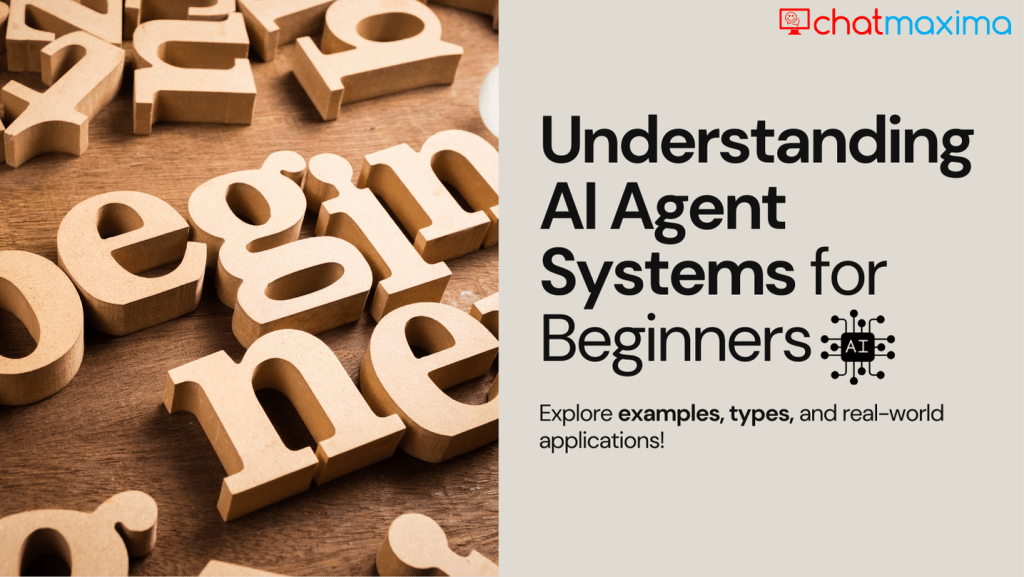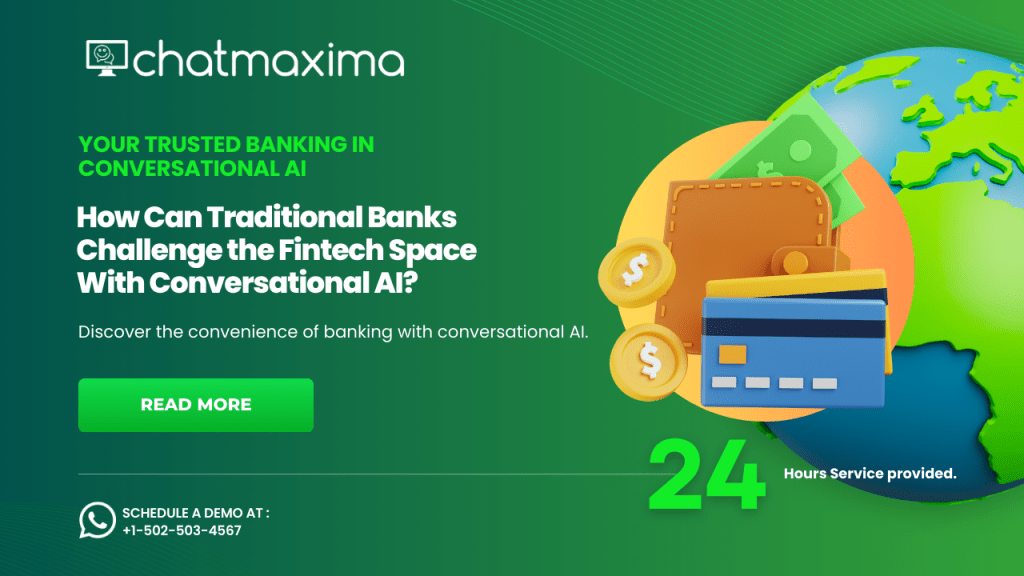Artificial Intelligence (AI) is transforming the way machines interact with the world. Among the many breakthroughs in AI, agent-based systems are a fascinating field that delves into how machines simulate thought processes and make decisions. But how exactly do these systems “think,” and what are the key types of AI agents shaping our everyday experiences?
In this post, we’ll break down the concept of AI agent systems, explore the different types of agents, and walk through real-world examples—including how tools like ChatMaxima are making an impact.
What Is an AI Agent System?
At its core, an AI agent system is a program or machine designed to perceive its environment, process that information, and take action to achieve specific goals. Think of it as a decision-making entity capable of learning, adapting, and optimizing outcomes based on inputs.
Unlike traditional software, AI agents operate with a degree of autonomy. Instead of rigid instructions, they rely on rules, algorithms, or learned behaviors to make choices—a bit like how humans navigate the world by combining instinct, knowledge, and experience.
To better understand how AI agents think, let’s explore the steps in their process:
- Perception: The agent gathers data from sensors or input systems. For example, a self-driving car might use cameras, LIDAR, and GPS to perceive its surroundings.
- Reasoning: The data is analyzed to determine the best course of action. This involves predictive modeling, decision-making algorithms, or rule-based logic.
- Action: The agent executes its decision—whether it’s moving to a new location, responding to a query, or making a recommendation.
- Learning: Over time, the agent refines its decision-making process by learning from past outcomes through methods like machine learning or reinforcement learning.
Types of AI Agents
AI agents come in different forms, each tailored for specific functions and levels of complexity. Let’s explore the key types:
1. Reactive Agents
Reactive agents operate based solely on current perceptions, without memory or the ability to learn. They follow predefined rules and respond directly to stimuli.
- How They Think: Reactive agents rely on a simple stimulus-response mechanism. For example, if a sensor detects an obstacle, the agent may trigger an avoidance maneuver.
- Example: An automatic vacuum cleaner like the iRobot Roomba. It reacts to obstacles by changing direction but doesn’t store information about room layouts.
2. Model-Based Agents
These agents go a step further by maintaining a model of their environment. They can predict outcomes and make more informed decisions.
- How They Think: By combining sensory data with internal models, these agents anticipate future states and act accordingly.
- Example: A chess-playing AI. It evaluates the current board state, predicts future moves, and decides on the best strategy.
3. Goal-Based Agents
Goal-based agents focus on achieving specific objectives. They evaluate actions not just for immediate outcomes but for their alignment with long-term goals.
- How They Think: These agents prioritize actions based on how effectively they bring the system closer to a desired state.
- Example: Self-driving cars that plan routes to minimize travel time while avoiding hazards.
4. Utility-Based Agents
Utility-based agents go beyond goal achievement by optimizing results based on a utility function, which assigns value to different outcomes.
- How They Think: They evaluate multiple courses of action to select the one with the highest utility, often balancing trade-offs like speed vs. safety.
- Example: AI-powered e-commerce systems that recommend products tailored to a user’s preferences.
5. Learning Agents
Learning agents are capable of improving their performance over time by adapting to new data and experiences.
- How They Think: They use machine learning algorithms to refine their decision-making process. These agents can adjust to changing environments and user behavior.
- Example: Virtual assistants like Siri or Alexa that improve their responses based on user interactions.
6. Multi-Agent Systems
In a multi-agent system, several agents work together or compete to achieve goals. These systems often require coordination and negotiation.
- How They Think: Each agent has its own decision-making process, but the system as a whole collaborates or competes to optimize outcomes.
- Example: Stock market trading algorithms where multiple bots buy and sell assets simultaneously to maximize gains.
Real-World Applications of AI Agents
AI agent systems are woven into countless aspects of modern life. Here are some notable examples:
1. Healthcare
AI agents assist in diagnosing diseases, personalizing treatment plans, and managing patient data.
- Example: IBM Watson Health, which uses AI agents to analyze medical records and suggest treatment options.
2. Transportation
Autonomous vehicles and traffic management systems rely heavily on goal-based and utility-based agents.
- Example: Tesla’s Autopilot, which uses sensors, cameras, and AI models to navigate roads and optimize driving behavior.
3. Finance
From fraud detection to investment strategies, AI agents play a crucial role in the financial sector.
- Example: Robo-advisors like Betterment or Wealthfront, which use AI to create and manage investment portfolios.
4. Customer Service
Chatbots and virtual assistants are prime examples of reactive and learning agents improving user experiences.
- Example: Tools like ChatMaxima enhance customer interactions by offering intelligent, AI-driven responses and context-aware assistance.
5. Gaming
AI agents in games enhance the experience by simulating intelligent opponents or companions.
- Example: Non-player characters (NPCs) in video games like The Sims, which react to player actions and environmental changes.
6. Smart Homes
AI agents power home automation systems, making everyday life more convenient and efficient.
- Example: Smart thermostats like Nest, which learn your preferences to optimize temperature settings.
7. Education
Personalized learning platforms use AI agents to adapt content and pacing based on individual progress.
- Example: Duolingo, which tailors language lessons to suit the user’s skill level and learning pace.
Challenges and Ethical Considerations
While AI agents bring immense benefits, they also come with challenges:
- Bias: AI agents can inadvertently inherit biases from training data, leading to unfair outcomes.
- Transparency: Understanding how agents make decisions can be difficult, especially with complex models.
- Autonomy: High levels of autonomy in agents raise questions about accountability and control.
- Security: Ensuring agents are protected from malicious attacks is a critical concern.
- Ethical Dilemmas: Balancing utility and morality can be tricky—e.g., in autonomous cars deciding between the safety of passengers vs. pedestrians.
The Future of AI Agent Systems
As AI continues to evolve, agent systems will become increasingly sophisticated. Future developments may include:
- Generalized Agents: Systems capable of handling a broader range of tasks with minimal retraining.
- Collaborative AI: Multi-agent systems designed for seamless teamwork in industries like healthcare and logistics.
- Emotionally Intelligent Agents: AI that recognizes and responds to human emotions for more natural interactions.
- Sustainability-Focused AI: Agents dedicated to optimizing resources and reducing environmental impact.
Conclusion
AI agent systems represent an exciting frontier in technology, offering a glimpse into how machines can simulate thought, adapt to their environment, and work alongside humans to solve complex problems. By understanding the types and capabilities of these agents, we gain a clearer picture of the innovative ways they’re shaping our world.
Whether it’s a chatbot simplifying customer service or a self-driving car revolutionizing transportation, AI agents are here to stay—and their potential is boundless. The real question isn’t just how they think, but how we’ll collaborate with them to build a smarter, more efficient future. Tools like ChatMaxima play a crucial role in bridging the gap between complex AI systems and practical, user-friendly solutions.


